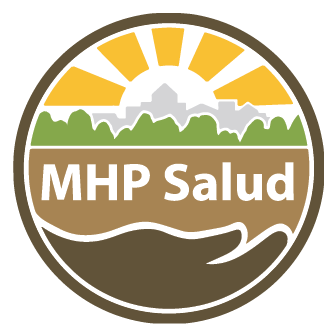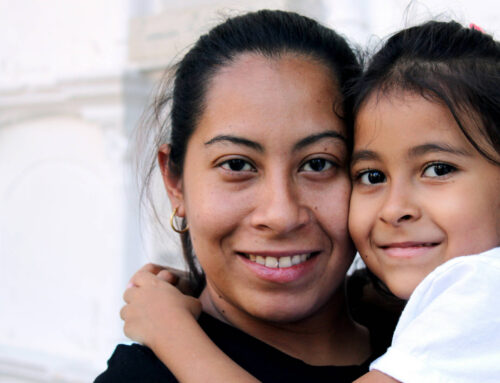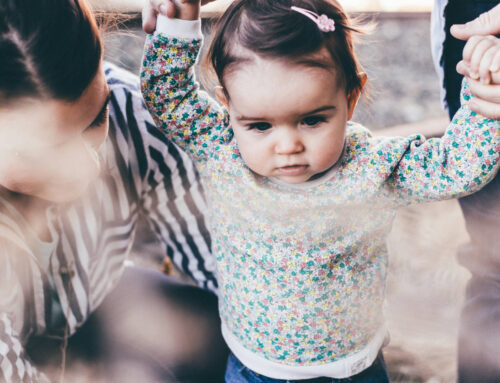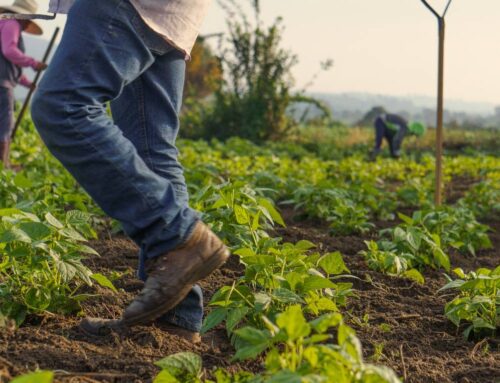U.S. Poet Laureate Juan Felipe Herrera Reflects on Art as Medicine
Program Director Anne Lee had the opportunity to interview the U.S. Poet Laureate Juan Felipe Herrera about his experiences growing up as the child of agricultural workers with minimal health resources and how those early experiences informed his art today. He also discussed the need for culturally-appropriate health education in the farmworker community, and he spoke about the intersection of community-based art and public health. The interview took place at the East Coast Migrant Stream Forum in Memphis, TN on October 16, 2015.
AL: I’d like to start by discussing your childhood, growing up working alongside your parents as an agricultural farmworker. Do you have any early memories of how health or healthcare affected your life growing up in the San Joaquin Valley?
JFH: My experience was growing up with my parents as a child in the San Joaquin valley in Central California, and so my memories are based on being a child. I was literally born on the road. When it was time for me to burst out into life, my mother and father just stopped at a familiar site which was Fowler, California, one of the family stops for those years in the ‘40s, and so I was born there.
And then we literally got on the road 30 days later. But that kind of would be the first sign of the difficulties, because my mother had a cesarean, and to get out into the fields 30 days after you have that big operation in the ‘40s, which was literally just a buzz saw and some string, it wasn’t as sophisticated, obviously, as the technology today. So I think that was the first sign of the difficulties of health in the field, particularly to my mother, as a woman having a child and having surgery and going into the field three weeks later, with just you know, the rudimentary surgery procedures they had in the ‘40s. So, that’s one story my mother would tell me; and it’s a true story.
After that, my memories are just being out there. I was a child and I didn’t participate… I was a little baby and who knows where I was in the trailer or outside the trailer. What I remember secondly given health, would be the tools they used. They were very sharp tools and knives to cut grape vines, and one slip of those knives, and you’re going to slice a very deep cut into your hands or into your arms. There were no centers and no health clinics. Even if there were, I didn’t know where they were, and I didn’t remember going to any of those throughout my whole life with my mother and father. We never went to a clinic. Maybe much, much, much later when I was a teenager, I would go to the hospital to get some kind of exam, and my mother would go to Tijuana to see a doctor.
She had depression, and it was a pain that she didn’t know what it was. No one knew what it was. The doctors didn’t know what it was; she didn’t know what it was. And there were no resources, no explanations, no clinics, no doctors and even when she did go to the doctor in Tijuana, even if it was in Spanish. So she suffered from depression all her life, and she never got precise feedback on what she was suffering.
It came from that early trauma of being so poor throughout her whole childhood, and becoming very nervous, being a child filled with anxiety, because I saw her suffering from anxiety, which is related to not knowing where you’re going, not knowing if there’s going to be food and just experiencing poverty.
Was there someone in your own community who you could turn to for help or medical advice, someone like a Promotor(a) de Salud?
No, no. There was nothing like that. I mean, much later, in Logan Heights, San Diego, in the Latino, Mexican maybe Chinese and African American part of town, much later in 1971, kind of during the civil rights movement and Chicano movement and political consciousness in the community—activist. Young people began to occupy a tiny little island of dirty underneath the Coronado Bay Bridge and turned it into Chicano Park instead of a police station. And in that same time, two elder women occupied what was called a neighborhood house, which was a place where you could get basketballs, and check out ping pong, coming out of elementary school and you could go play there. But it was kind of left to flounder, so Laura Rodriguez, an elder who was in her 60s, occupied that building, because she wanted a medical facility, and it turned into the Laura Rodriguez Pediatric Clinic, and now today, it’s a model for the county-wide system of neighborhood public health facilities. But it began in 1971 with occupying that building. But up until then, when we lived in that same barrio, there was absolutely nothing even though there had been a call to do that, by some of the activist women of San Diego. It took a grassroots action to finally get something in the community and provide public health.
Your work has focused on social change and cultural movements, so do you see a connection between your community-centric art and the health of the community?
Yes, I do, you know, because not only are there young people that feel they don’t have a place in the community, and teachers that feel they don’t have enough materials to really teach to their children, and parents that do not have access to books and find little to offer sometimes, it’s good to have activist materials and artists and writers. Because when you write, and you paint and you dance and sing, and all of those things do take place, but when you really emphasize them, they provide a lot of reflection; they provide a lot of joy; they provide a lot of collective work in the home and in school and in the community. They also provide channels for people to express where they’re coming from in their own way, and very public and visual and acoustic and auditory forms and channels to kind of present themselves outside of four walls.
Four walls, okay, we know each other, we talk, we have food, we laugh, hopefully we laugh, we play guitar, we tell stories. But outside those four walls, we are invisible, and public visibility, is one of the most healthy things, because when you see your face and your words and your stories on the walls and in the park day after day in your community, there’s a big sense of joy and acknowledgement and that kind of resolves a lot of emotional trauma for those that live in difficult conditions and whose language and country has been kind of pushed back, and that’s a very traumatic thing to experience. So when you experience the opposite, all of a sudden, it’s like a giant shot of Penicillin or it’s like a giant therapy for hundreds and thousands of people. That’s one of the most healthy things—public acknowledgement through the arts and writing in all forms.
We came across your Teatro Ambulante de Salud project from about ten years ago. Can you tell me a little bit about how that idea formed?
Dr. Gaxiola, a professor at Fresno State in the early 2000s, wanted me to be part of his group to implement a health service project to seasonal farmworkers in Herndon, California a small town around two and a half hours south of Fresno. It’s a small community, a beautiful community of farmworkers with little medical services as usual in our experience.
So, I said “do you know what I can do, Dr. Gaxiola, is I can put together a theater with students on these issues of depression, anxiety domestic abuse, alcoholism, and it’ll be the kind of theater that’ll include farmworkers once we get to that community and present the first phase of it. In the second phase, we’ll freeze the action and trade the actors to resolve the conflict. So we say the husband comes in drunk, and the wife says “Oh, you’ve been drinking again,” then we’ll freeze the action and we’ll ask whoever wants to volunteer to tell us what’s going to happen next. And then we’ll trade one actor with a community member, and we’ll take it to another scene to see what the community sees as the next episode, and then we’ll finally come to a critical point and bring someone else in to see how they want to resolve it, and then we’ll talk about it after each scene. And we’ll get closer to what Dr. Gaxiola wanted the people to do which was to pick up a phone and ask for assistance regarding, let’s say, alcoholism. Once they have discussed, visualized and experienced being in these scenes in their own terms.”
I thought it was really good… but there was no Promotora, and the material that was presented was a little too professional. So the language wasn’t familiar, it was more like, “well these are the four issues that farmworkers face today, and you must be aware of each issue. Issue number one, and then on and on.” And that’s okay; it was well-presented and had beautiful information. But I know that if I was with my mother and father and someone presented that way, it would be interesting, and my mother would be most excited about learning, but that information presented in that style wouldn’t really make it home. Because it’s the style and the tone and the environmental ergonomics—everything has to work. You don’t stand up fully-dressed in a Macy’s outfit and present to a farmworker audience who is sitting down, facing them directly—that’s not really going to work out. You have to be in a circle, you have to be more toned down, and you have to be using more of a cariño tone. It has to be someone you can identify with, presented in a tone you can identify with, and a number of other things that I actually don’t know about if I had to do it again. It was kind of a rushed thing. Dr. Gaxiola was doing his best, the counselors were doing their best, and they were effective, but if we had another run, I would say it would take a little bit more time. It didn’t last that long, maybe it lasted for a month or two months.
So looking towards the future, what is your vision or your hope for the health of migrant farmworkers?
My vision and hope is for them to be accepted in society as full citizens and complete and valuable citizens–to be seen as one of the foundational pivots and the actual richness of our social well-being, who produce billions of dollars’ worth of produce and other services, as you know. So I’d like to see that acknowledgement fully take place at all levels of society.
Outside of that, my hope for the health of migrant farmworkers is that they have extremely easy access, and culturally relevant access, to materials, resources, services and personnel at all levels, because of the level of their work that they do.
My third hope is that there are multiple channels for them to express their lives and stories and rich stories and poems and songs and riddles. We have so much cultural deftness, and this is rarely tapped. The opposite is mostly true; we’re seen as lacking intelligence and lacking education, yet our education vitality is in our cultural roots. That’s another thing. I guess the last thing would be for them to have ample educational resources as well.
Do you have anything to add that I missed?
You know, I see migrant farmworkers a lot in my travels throughout the United States. I see them and in their full humanity, and I also see them in the darkness as I’m travelling. Let’s say in the Greyhound buses to Seattle, they’re huddled up in those buses going to the next job. I see them in hotels working and cleaning rooms, even though I know we’re talking about farmworkers, but I see migrants working in those rooms, whether they’re documented or not. Then I meet those who are studying farmworkers and undocumented communities, especially women, and how much they suffer, weather they’re in little, almost concentration camp-like communities, locked in within businesses that from the outside look fabulous, like casinos, for example, and on and on.
So it’s a big issue. My very last thing is to thank the Promotoras and to thank all the migrant stream projects that we have in the United States now in 2015 that we never had before, and to thank all the families of farmworkers and the children and the mothers and fathers for their incredible journeys throughout the United States and for their incredible contributions to our prosperous lives in the United States and to acknowledge them as fully as I can. I want to say “thank you, muchas gracias,” to everybody involved in their wellbeing.
About MHP Salud
MHP Salud has over thirty years of experience implementing CHW programs and training organizations looking to start and/or strengthen their own CHW programs. For more information about MHP Salud, our services, and how we can help you, please email us at info@mhpsalud.org








